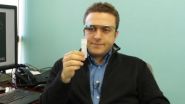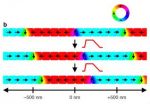(Press-News.org) A fraction of the carbon that finds its way into Earth's oceans -- the black soot and charcoal residue of fires -- stays there for thousands for years, and a new first-of-its-kind analysis shows how some black carbon breaks away and hitches a ride to the ocean floor on passing particles.
The study by scientists from Rice University, the University of California, Irvine, and the University of South Carolina offers the first detailed analysis of how black carbon gets into deep ocean sediments, as well as an accounting of the types and amounts of black carbon found in those sediments.
"Our previous work showed that the black carbon in ocean sediments is ancient," said lead investigator Ellen Druffel, the Fred Kavli Professor of Earth System Science at UC Irvine. "It's anywhere from 2,000 to 5,500 years older than the organic carbon in the same sediments. That means that it either stays dissolved in the water for a long time before it's deposited or it stays trapped somewhere else -- like the soil -- for thousands of years before it enters the ocean. This new study offers the most complete picture yet of how black carbon finds its way into deep ocean sediments."
"The environmental fate of black carbon is not well-understood," said study co-author Caroline Masiello, a Rice biogeochemist who began studying black carbon with Druffel in the 1990s. "It's extraordinarily stable, and though we don't fully understand how nature breaks it down and recycles it into the deep Earth, we know that it must because otherwise we would be knee-deep in it."
Virtually all black carbon results from combustion. Soot, the airborne version of black carbon, is a key element of smoke. Charcoal is another form of black carbon. Each form is produced naturally by wildfires, as well by industry and other human activities.
Druffel and colleagues said their study did not aim to answer questions about how much black carbon people are producing today or how human-produced black carbon is affecting global climate.
"Our aim was to show how the black carbon cycle likely works in the ocean," Druffel said. "We are looking for the baseline, which is an important thing for others to have to do future studies about anthropogenic change."
Scientific interest in black carbon is high. On the one hand, a comprehensive 2013 study found that soot is a far more important player in global climate than was previously believed. On the other, there is a growing global movement among gardeners, farmers and others to use another form of black carbon -- biochar -- to both boost crop yields and to counter greenhouse emissions by locking carbon in soil for centuries.
"Whether you come at this from the point of view of reducing soot in the atmosphere or of using biochar to counter global warming, it's important to have a better understanding of where black carbon goes, how it gets there and how much of it breaks down along the way," said Masiello, associate professor of Earth science at Rice. "One of the important things about this study is that we were able to classify the kinds and types of black carbon found in seafloor sediments. This helps us narrow down the role of the ocean as a sink for both soot and charcoal."
Black carbon's journey to the bottom of the ocean begins when the material enters the water. Airborne soot gets into the ocean via rainfall and runoff from streams. Though charcoal residue can stay trapped in soils for thousands of years, runoff and erosion eventually carry some of it to the ocean as well.
The researchers used radiocarbon dating and other techniques to examine the black carbon that was buried in seafloor sediments in the Northeast Pacific that dated to about 20,000 years ago. The study's lead author, graduate student Alysha Coppola of UC Irvine, also conducted an extensive chemical analysis of the types and amounts of black carbon that were dissolved in seawater, trapped in sediments and contained in ocean-going particles, tiny specs of matter that gradually sink to the seafloor.
"We found that black carbon is taken up by particles that are produced in the water column," said Coppola. "One example would be fecal pellets that are excreted by organisms. Another is a sticky 'marine snow' that falls slowly downward to the bottom and gets buried in sediments."
Coppola said black carbon tends to stay dissolved in seawater, and only occasionally gets snagged by a passing marine particle.
"I'm surprised that given how much black carbon is produced, most of it remains in the ocean for thousands of years," Coppola said. "It's very interesting that only a relatively small amount with a certain type of chemistry is removed to the ocean floor."
INFORMATION:
The National Science Foundation funded the study. Co-authors include Lori Ziolkowski of the University of South Carolina.
High-resolution IMAGES are available for download at:
http://news.rice.edu/wp-content/uploads/2014/04/0407_BC-Trap-orig.jpg
CAPTION: Sediment traps, like this one being deployed from the research vessel New Horizon, were used to sample black carbon in particles that sank to the bottom of the Northeast Pacific.
CREDIT: E. Druffel/UC Irvine
http://news.rice.edu/wp-content/uploads/2014/04/0407_BC-Druffel-med.jpg
CAPTION: Ellen Druffel
CREDIT: UC Irvine
http://news.rice.edu/wp-content/uploads/2014/04/0407_BC-Masiello-lg.jpg
CAPTION: Caroline Masiello
CREDIT: Rice University
http://news.rice.edu/wp-content/uploads/2014/04/0407_BC-Coppola-lg.jpg
CAPTION: Alysha Coppola
CREDIT: UC Irvine
A copy of the Geophysical Research Letters paper is available at:
http://onlinelibrary.wiley.com/doi/10.1002/2013GL059068/abstract
Follow Rice News and Media Relations on Twitter @RiceUNews.
Located on a 300-acre forested campus in Houston, Rice University is consistently ranked among the nation's top 20 universities by U.S. News & World Report. Rice has highly respected schools of Architecture, Business, Continuing Studies, Engineering, Humanities, Music, Natural Sciences and Social Sciences and is home to the Baker Institute for Public Policy. With 3,920 undergraduates and 2,567 graduate students, Rice's undergraduate student-to-faculty ratio is 6.3-to-1. Its residential college system builds close-knit communities and lifelong friendships, just one reason why Rice has been ranked No. 1 for best quality of life multiple times by the Princeton Review and No. 2 for "best value" among private universities by Kiplinger's Personal Finance.
Study: Black carbon is ancient by the time it reaches seafloor
Analysis finds that more than half of black carbon never reaches bottom
2014-04-08
ELSE PRESS RELEASES FROM THIS DATE:
Graphene nanoribbons as electronic switches
2014-04-08
One of graphene's most sought-after properties is its high conductivity. Argentinian and Brazilian physicists have now successfully calculated the conditions of the transport, or conductance mechanisms, in graphene nanoribbons. The results, recently published in a paper in EPJ B, yield a clearer theoretical understanding of conductivity in graphene samples of finite size, which have applications in externally controlled electronic devices.
When the conductivity is high, the electrons, carriers of electrical current, are minimally hampered during transport through graphene. ...
Scientists use Google Glass to map the future of medical testing (video)
2014-04-08
WASHINGTON, April 8, 2014 — A team of researchers at UCLA has transformed Google Glass into powerful, wearable medical testing laboratory. Aydogan Ozcan and his team developed an application that reads dozens of different types of diagnostic tests for malaria, prostate cancer and HIV, to name a few. Glass uploads the results to secure servers and provides anonymous data to epidemiologists. In the American Chemical Society's (ACS') newest Breakthrough Science video, Ozcan demonstrates how the app works, and explains the broad impact it could have on medicine. The video is ...
UC geographers develop a system to track the dynamics of drought
2014-04-08
University of Cincinnati researchers are at work tracking drought patterns across the United States. Qiusheng Wu, a doctoral student and research assistant for the UC Department of Geography, and Hongxing Liu, a UC professor and head of the Department of Geography, will present details this week at the annual meeting of the Association of American Geographers (AAG) in Tampa, Fla.
To trace the dynamics around agricultural drought, the UC researchers implemented an Event-based Spatial-Temporal Data Model (ESTDM) to detect, track and monitor conditions. The framework organizes ...
Back to basics: Redesigning systems of care for older adults with Alzheimer's disease
2014-04-08
INDIANAPOLIS -- The number of older adults with dementia in the United States is forecast to more than double over the next 40 years. Caring for these individuals will have a significant impact on caregivers as well as the health care system and its workforce.
In a paper published in the April issue of the peer-reviewed journal Health Affairs, Regenstrief Institute investigator Christopher M. Callahan, M.D., founding director of the Indiana University Center for Aging Research, reviews two new dementia care models that seek to decrease stress for caregivers, reduce health ...
Kitchens are a source of multi-drug resistant bacteria
2014-04-08
CHICAGO (April 8, 2014) – After handling raw poultry, hands of food preparers and cutting boards remain a source of transmission for multi-drug resistant bacteria, such as E. coli that produce extended-spectrum beta-lactamases (ESBLs). The study of household and hospital kitchens was published in the May issue of Infection Control and Hospital Epidemiology, the journal of the Society for Healthcare Epidemiology of America.
"The spread of multi-drug resistant bacteria has been associated with the hospital setting, but these findings suggest that transmission of drug-resistant ...
Expert guidance highlights practices to reduce prevalence of catheter-associated UTIs
2014-04-08
CHICAGO (April 8, 2014) – New expert guidance highlights strategies for implementing and prioritizing efforts to prevent catheter-associated urinary tract infections (CAUTI) in hospitals. The practice recommendations, published in the May issue of Infection Control and Hospital Epidemiology, are the first in a series to be published over several months sharing evidence-based strategies to help healthcare professionals effectively control and prevent the spread of healthcare-associated infections (HAIs).
A Compendium of Strategies to Prevent Healthcare-Associated Infections ...
Domain walls in nanowires cleverly set in motion
2014-04-08
Researchers at Johannes Gutenberg University Mainz (JGU) have achieved a major breakthrough in the development of methods of information processing in nanomagnets. Using a new trick, they have been able to induce synchronous motion of the domain walls in a ferromagnetic nanowire. This involved applying a pulsed magnetic field that was perpendicular to the plane of the domain walls. "This is a radically new solution," explained Professor Mathias Kläui of the Institute of Physics of Johannes Gutenberg University Mainz. "It enables us to move domain walls synchronously over ...
Montreal researchers explain how our immune system kills abnormal blood cells
2014-04-08
A team of researchers at the IRCM, led by André Veillette, MD, explains how our immune system kills abnormal blood cells. Their discovery, recently published in the Journal of Experimental Medicine, could eventually lead to new treatment avenues for leukemia, lymphoma and certain types of infectious viral diseases.
"Our team is studying how natural killer cells can eliminate abnormal hematopoietic (blood) cells," explains Dr. Veillette, Director of the Molecular Oncology research unit at the IRCM. "NK (natural killer) cells are crucial to the immune system and play a ...
How coughs and sneezes float farther than you think
2014-04-08
The next time you feel a sneeze coming on, raise your elbow to cover up that multiphase turbulent buoyant cloud you're about to expel.
That's right: A novel study by MIT researchers shows that coughs and sneezes have associated gas clouds that keep their potentially infectious droplets aloft over much greater distances than previously realized.
"When you cough or sneeze, you see the droplets, or feel them if someone sneezes on you," says John Bush, a professor of applied mathematics at MIT, and co-author of a new paper on the subject. "But you don't see the cloud, ...
Gothenburg scientist in Nature: Climate models underestimate costs to future generations
2014-04-08
The seven scientists behind the article, due to be published 10 April, conclude that the reports by the UN climate panel serve an important function in setting the agenda for climate research. Yet the most important role of the Intergovernmental Panel on Climate Change (IPCC) is to inform the global political discussion on how the harm caused by climate change should be handled.
Thomas Sterner, expert on policy instruments to reduce greenhouse gas emissions, is a Coordinating Lead Author of one key chapter on policy instruments in the Working Group III of the Fifth Assessment ...
LAST 30 PRESS RELEASES:
Injectable breast ‘implant’ offers alternative to traditional surgeries
Neuroscientists devise formulas to measure multilingualism
New prostate cancer trial seeks to reduce toxicity without sacrificing efficacy
Geometry shapes life
A CRISPR screen reveals many previously unrecognized genes required for brain development and a new neurodevelopmental disorder
Hot flush treatment has anti-breast cancer activity, study finds
Securing AI systems against growing cybersecurity threats
Longest observation of an active solar region
Why nail-biting, procrastination and other self-sabotaging behaviors are rooted in survival instincts
Regional variations in mechanical properties of porcine leptomeninges
Artificial empathy in therapy and healthcare: advancements in interpersonal interaction technologies
Why some brains switch gears more efficiently than others
UVA’s Jundong Li wins ICDM’S 2025 Tao Li Award for data mining, machine learning
UVA’s low-power, high-performance computer power player Mircea Stan earns National Academy of Inventors fellowship
Not playing by the rules: USU researcher explores filamentous algae dynamics in rivers
Do our body clocks influence our risk of dementia?
Anthropologists offer new evidence of bipedalism in long-debated fossil discovery
Safer receipt paper from wood
Dosage-sensitive genes suggest no whole-genome duplications in ancestral angiosperm
First ancient human herpesvirus genomes document their deep history with humans
Why Some Bacteria Survive Antibiotics and How to Stop Them - New study reveals that bacteria can survive antibiotic treatment through two fundamentally different “shutdown modes”
UCLA study links scar healing to dangerous placenta condition
CHANGE-seq-BE finds off-target changes in the genome from base editors
The Journal of Nuclear Medicine Ahead-of-Print Tip Sheet: January 2, 2026
Delayed or absent first dose of measles, mumps, and rubella vaccination
Trends in US preterm birth rates by household income and race and ethnicity
Study identifies potential biomarker linked to progression and brain inflammation in multiple sclerosis
Many mothers in Norway do not show up for postnatal check-ups
Researchers want to find out why quick clay is so unstable
Superradiant spins show teamwork at the quantum scale
[Press-News.org] Study: Black carbon is ancient by the time it reaches seafloorAnalysis finds that more than half of black carbon never reaches bottom



